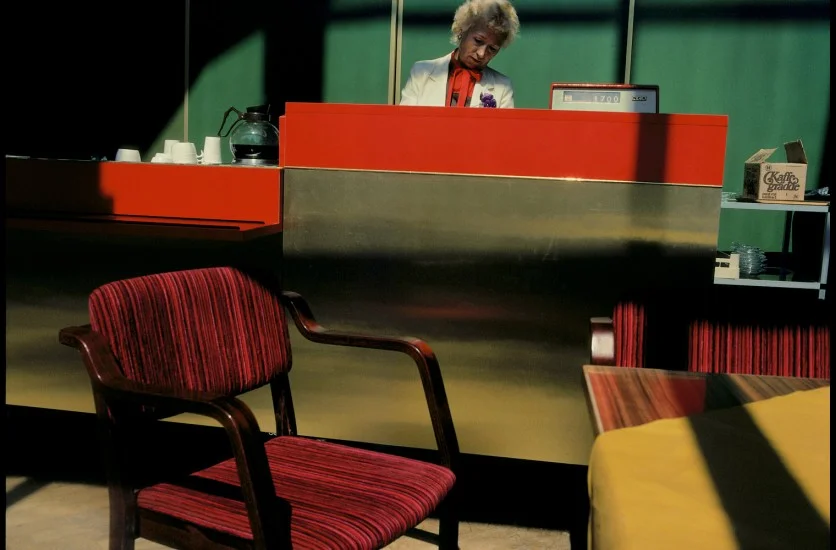Paris Diary - Harry Gruyaert at Maison Européenne de la Photographie






© Harry Gruyaert / Magnum Photos
Harry Gruyaert at Maison Européenne de la Photographie was an exhibition rich with colour I've not seen in a photography exhibition for a while. I was not familiar with Harry Gruyaert's work before, but after this exhibition, I can't wait to get my hand on some of his photo books, especially TV Shots (more about it below).
I was pleased to read his influences include cinema and directors like Michelangel Anotonioni (which was also a delightful coincidence, since he too had an exhibition at Cinémathèque française in Paris whilst I was there, you can read about it here.)
Here's a quote by Harry Gruyaert from the exhibition wall text that I really liked:
"Colour is more physical than black and white which is more intellectual and abstract. With a black and white photo, it's more about wanting to understand what's going on between the people. With colour, you have to ne instantly affected by the different tones expressing a particular situation."
About the exhibition and some images from it:
Harry Gruyaert photographs colours: this is his way of seeing the world. At around 20 years old, he left his native Belgium, feeling it tobe too limiting, and decided that photography would be his chosen means of expression: it would allow him to translate and consruct his quest for knowledge and sensuality.
In the 1970s, along with American photographers Saul Letter, Joel Meyerowitz, Stephen Shore and William Eggleston, Harry Gruyaert was one of the few European pioneers to have give colour a purely creative dimension: an emotional non-narrative, and radically graphic perception of the world.
This exhibition at Maison Européenne de la Photographie is his first ever retrospective.
TV Shots

© Harry Gruyaert, TV Shots, GREAT BRITAIN & FRANCE. 1972
The exhibition included a video of images from Harry Gruyaert's TV Shots series, which I absolutely loved. I loved it for its aesthetics and it also made me think of today's "slacktivism".
This is an extract from the exhibition wall text:
In those days VCRs didn't yet exist, let alone the ability to freeze frames or to rewind. I was therefore face to face with current events, live, camera in hand and sometimes very close to the screen so I could frame things differently.
I found myself after all in a situation very similar to that of street photography where, in my opinion, a good image is a question of controlled chance, a kind of small miracle that arises when you're receptive and concentrated. Had there been more technical means at my disposal at the time. I'm under the impression the images wouldn't have been as good, or as fresh, but instead simply the result of conceptual exercise.
I had therefore become kind of bedroom reporter confornted with the "society of spectacle", in front of this factory of universal thought; it's probably the only time in my life when I truly felt like a "photojournalist", as close as I would ever be to the world's terrible reality; the machine, sabotaged by flamboyant disrespect, is put back in its placce and its message becomes absurd and alarming, wrote Yves Bourde in the French newspaper Le Monde in 1974.

© Harry Gruyaert, TV Shots, GREAT BRITAIN.1969
© Harry Gruyaert, TV Shots

© Harry Gruyaert, TV Shots, Munich, Olympic games.

© Harry Gruyaert, TV Shots
© Harry Gruyaert, TV Shots, GB. ENGLAND. London. BBC II. TV Shots. Apollo XIV. 1971.
TV Shots wasn't taken very seriously or appreciated when it was first shown more than 30 years ago. Read more about it here and you can see more images from the series here.
I leave you with this video interview with Harry Gruyaert. It's not from/about the exhibition, but will give you an insight into his work, his thoughts on and relationshop with photography, his interests and influences.

